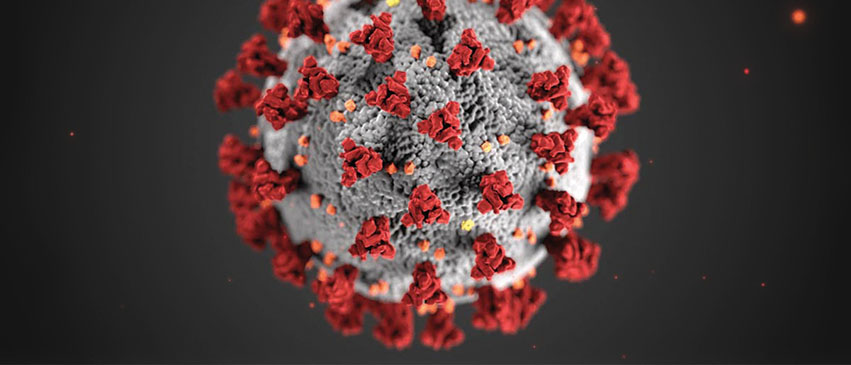
Viruses are constantly changing. Their genetic code is prone to changes called mutations that can impact how a virus looks or affects its hosts.
“Words like ‘mutation’ make people think that something terribly wrong is occurring, or something is dramatically different,” says Douglas Kasper, MD. But often that’s not the case. Viral mutations typically have no significant immediate effect on the ability of the virus to cause disease in humans.
Dr. Kasper explains how viruses mutate and what we know about the new COVID-19 strain, which was first detected in the United Kingdom.
How Viruses Mutate
Viruses rely on a host to survive and replicate. They invade the body of a human or animal and bind with the host’s cells to allow their own genetic material (RNA) to enter the cells. The host’s cells then read the genetic code and replicate it, making more of the virus. That new virus then leaves the cell in search of another host to infect.
Sometimes when that genetic code is being translated into proteins, a piece of the code gets changed. This is called a mutation, and they happen frequently. “Human cells are DNA-based, and DNA—thankfully for us—has much better integrity than RNA,” explains Dr. Kasper. “DNA has the ability to check itself. If there are small changes, or what we call mutations, to its genetic code, it can fix itself and get back to normal. RNA is a lot more messy.”
This cycle, he adds, goes on in constant replication. “Each time a replication occurs, there is a small chance that code could change. When you have this go across a huge population over time, the odds start to favor that the virus will adjust. It’s evolution on a very, very rapid level.”
Most of the time when these mutations occur, they are of little consequence. “One adjustment doesn’t change the protein configuration,” Dr. Kasper explains. These small changes are called “drift,” and usually translate into changes in a protein’s structure that allow our immune systems to continue to recognize and respond to an antigen. What’s more concerning are changes called “shift”—abrupt, major changes in the structure of a virus.
If a virus changes enough, it could be difficult to detect with existing tests. It might respond differently to treatments and medications, or could become unrecognizable to the antibodies developed after an infection or vaccination.
Vaccines and Variant Strains
There is reason to believe the vaccines that have been authorized or are being developed will cover a fair amount of drift in SARS-CoV-2. Vaccine developers are well aware of the ability of viruses to change over time, and they create vaccines that account for that.
Because SARS-CoV-2 is part of a large group of coronaviruses, researchers have seen many variations of the spike proteins for which these viruses are named. When developers created vaccines for COVID-19, they tested them against many different variations of the spike protein.
Research shows the antibodies created after vaccination will recognize and respond to many variations of the spike protein. This leads experts to be fairly confident the vaccines will continue to be effective against many mutations that may arise. But they also prepared for how they would respond if a dramatic shift occurs.
“There’s always been an expectation that over time, if these spike proteins do change significantly, the vaccine could be updated to address the changes and still provide the benefit to society that it’s intended to,” Dr. Kasper explains.
The first two vaccines authorized for use in the United States (created by Pfizer and Moderna) both use mRNA to teach our bodies to recognize and fight off these spike proteins. While they are comprised of multiple ingredients, mRNA vaccines have essentially two important components: mRNA, or a small piece of the virus’s genetic code, and a “vessel” of salt, fat and sugar that delivers the mRNA to our cells.
If this structure of the spike protein changed enough that the vaccine’s effectiveness was compromised, it’s likely that only a small piece of genetic code would need to be updated—which is much simpler than developing an entirely new vaccine.
“Part of the reason the mRNA structure was chosen was because of its ability to address these kinds of changes,” Dr. Kasper notes. “It’s not back to the drawing board if there is an unexpected change. The technology exists and has been tested. All it would require is changing the code that is in the vaccine.” PM
- Log in to post comments

